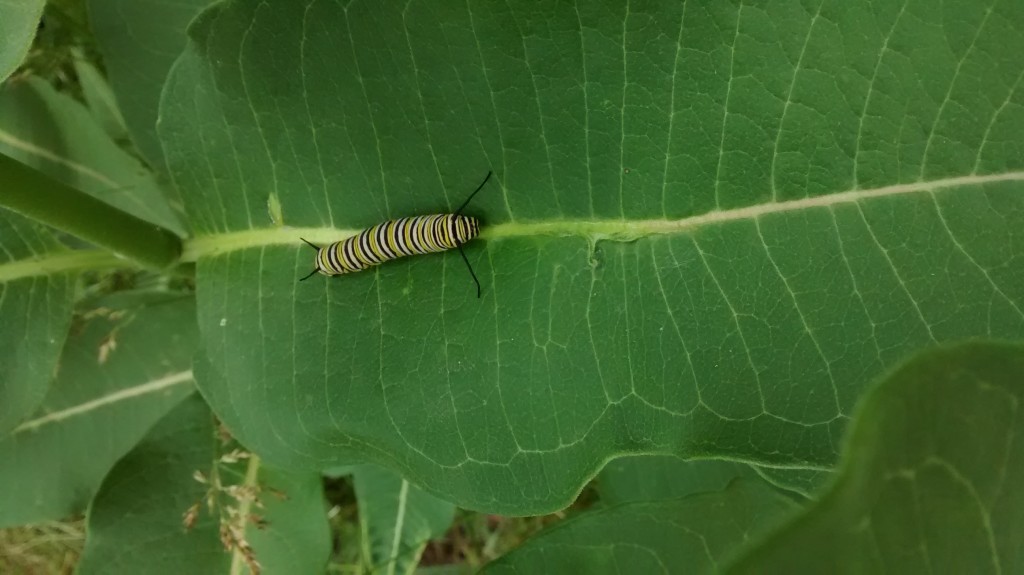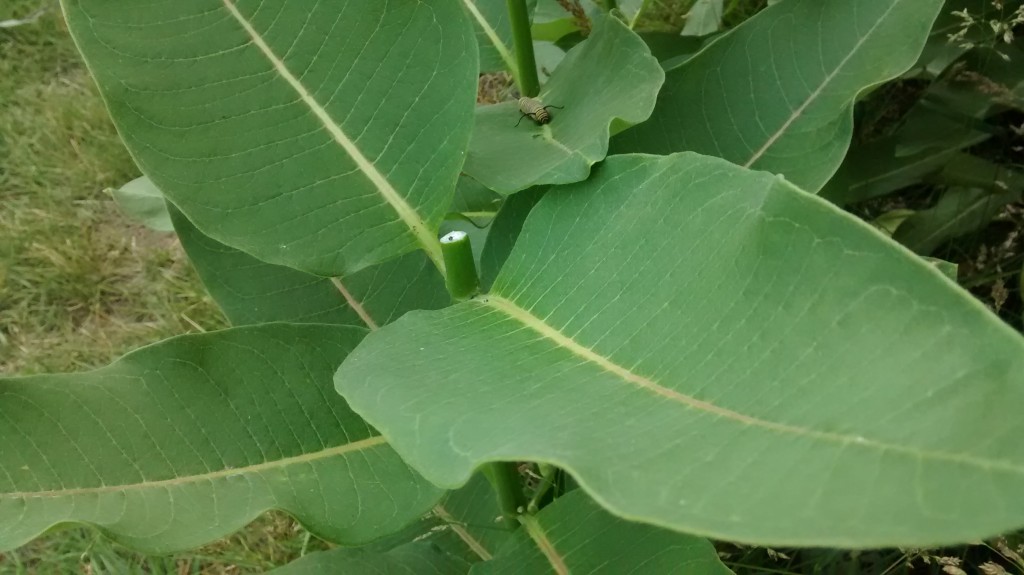I saw my first Monarch butterfly several days ago. I know they were here much earlier because I found a caterpillar on my milkweed plants. That means there had to be a female butterfly around before that.
It takes around four days for a Monarch egg to hatch. The caterpillar stage lasts around a week and a half to two weeks. Since my caterpillar was almost fully grown, the female Monarch that laid his eggs arrived nearly two weeks ago. How did she sneak into the yard without me seeing her?
Most of my milkweed plants are on the verge of blooming. The plants are maturing and the leaves and stems are beginning to stiffen and get tougher in order to hold up the flowers and seed pods. Although female Monarchs will lay eggs on any milkweed, they prefer the more tender leaves toward the top of the plant.
A gardener I know suggested that I cut back my some of my milkweed plants to stimulate new growth and leaves. Theoretically, those new leaves would make my plants more attractive to the butteries than others in the area. I just snipped off the plant just above the existing leaves. That caused some milkweed sap to ooze out of the cut. That sap is poisonous and irritating so make sure you don’t in your eye.
This is the first time I’ve tried this with milkweeds. I’ll let you know how it turns out.
Bob

